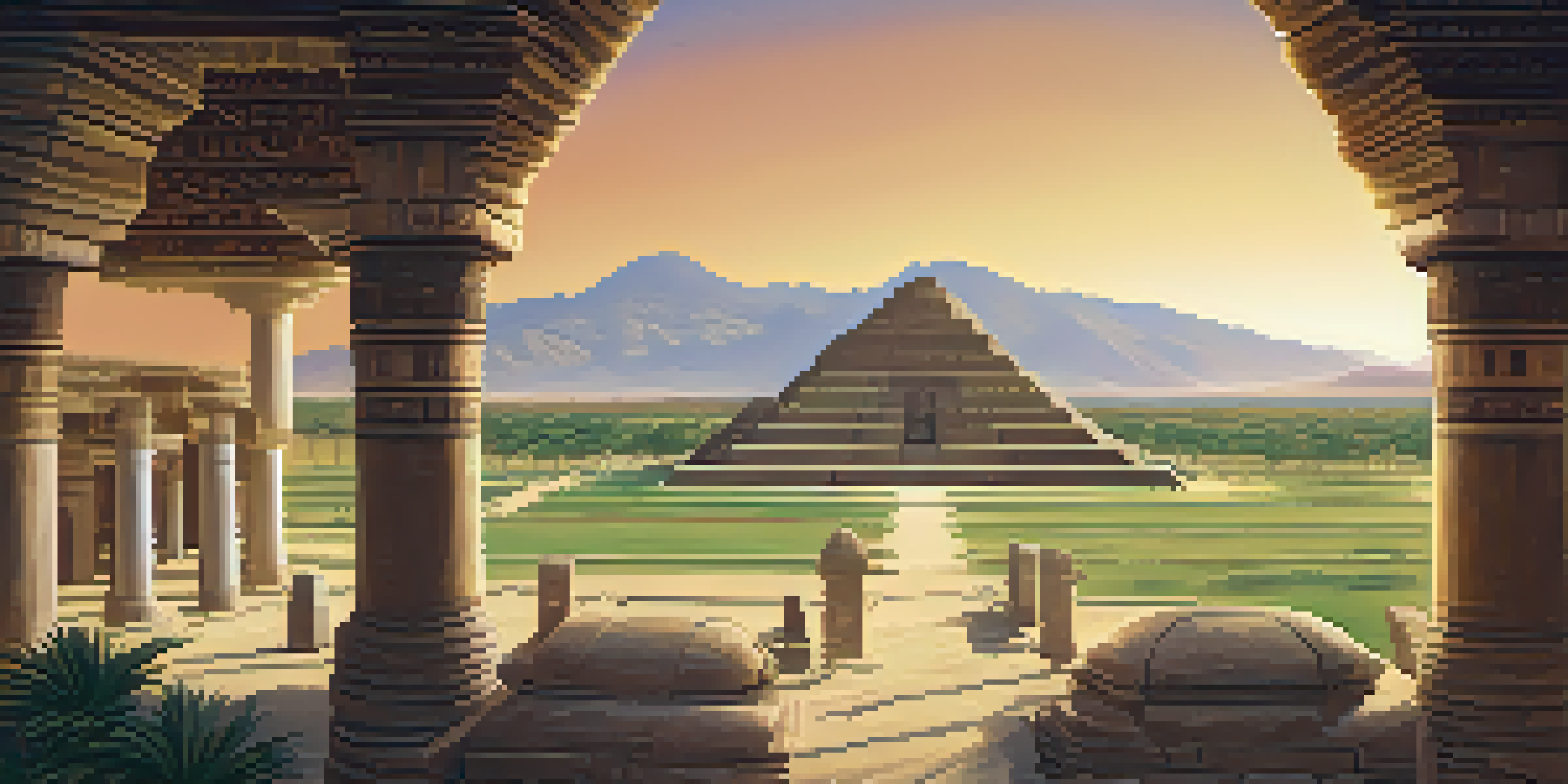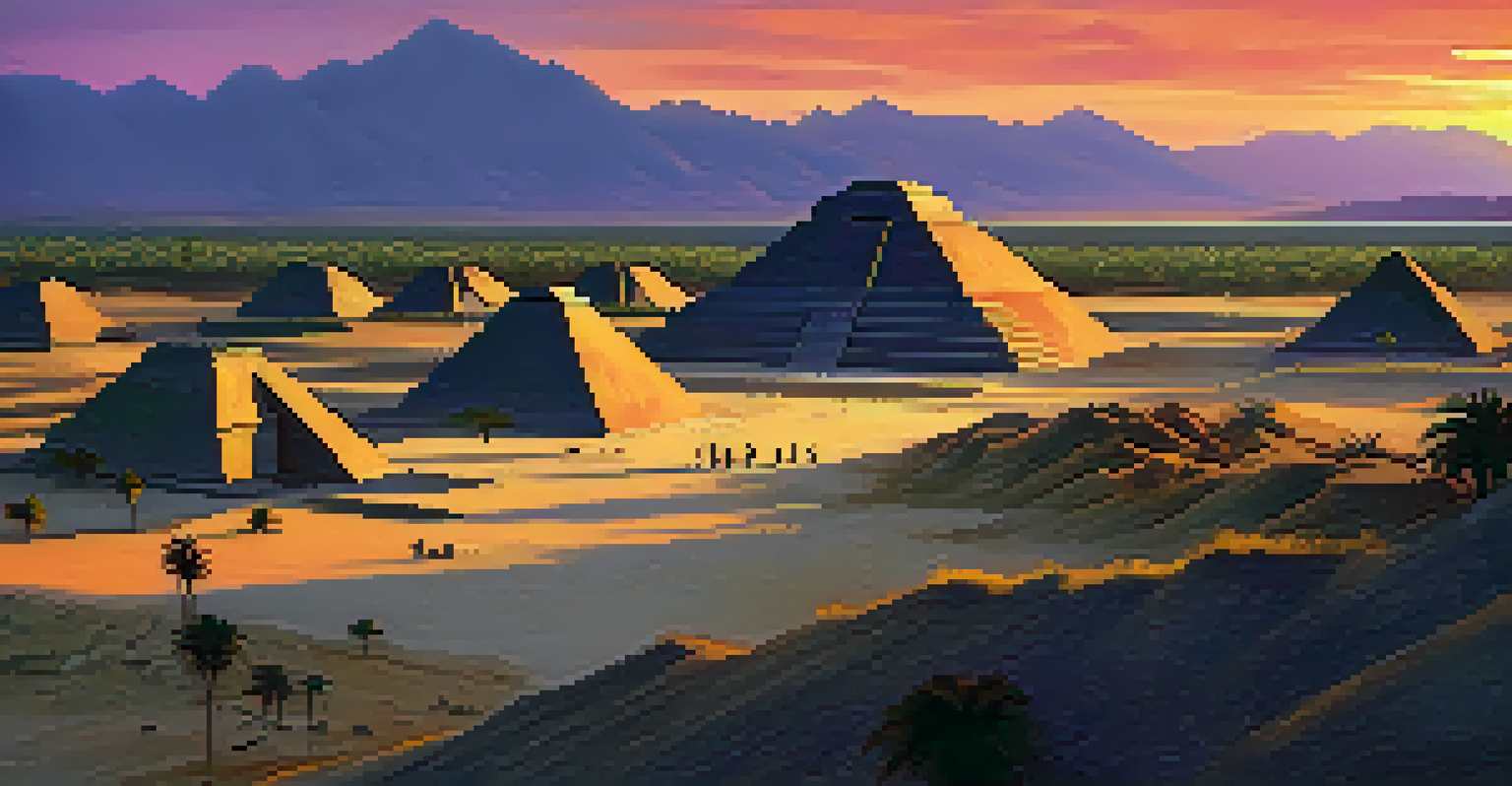The Ancient City of Caral: Peru's Earliest Civilization

Introduction to Caral: A Glimpse into Peru's Past
Nestled in the Supe Valley of Peru, Caral is considered one of the oldest urban centers in the Americas, dating back to around 3000 BC.
The greatest discoveries are those that shed light on our past and challenge our understanding of history.
This ancient city is a marvel of architectural ingenuity, featuring monumental structures that speak to its complex society.
Caral's discovery has reshaped our understanding of early civilizations, prompting historians to reconsider the timeline of human development.
The Architectural Wonders of Caral
Caral is renowned for its impressive architecture, which includes pyramids, plazas, and residential areas, all constructed without the wheel or metal tools.

The most notable structure, the Great Pyramid, stands at 18 meters tall and showcases advanced engineering techniques that were ahead of their time.
Caral: An Ancient Urban Center
Caral, located in Peru's Supe Valley, is one of the oldest urban centers in the Americas, dating back to around 3000 BC, showcasing advanced architectural and societal complexity.
These architectural feats reflect not only the city's aesthetic values but also its social organization, indicating a sophisticated society capable of large-scale projects.
Caral's Unique Social Structure
Unlike many other ancient civilizations, Caral appears to have thrived without a militaristic structure, which is quite fascinating.
Civilizations are not defined solely by their wars, but also by their ability to cultivate peace and cooperation.
Evidence suggests a society built on cooperation and trade, as opposed to conflict, with an economy likely based on agriculture and fishing.
This unique social structure challenges the traditional narrative of civilization development, highlighting alternatives to warfare as a means of societal growth.
The Role of Agriculture in Caral's Success
Agriculture played a pivotal role in the development of Caral, with the cultivation of crops such as cotton, beans, and squash supporting its population.
The nearby Supe River provided essential irrigation, allowing for surplus food production that enabled the city to flourish.
Unique Social Structure of Caral
Unlike many ancient civilizations, Caral thrived on cooperation and trade rather than militaristic practices, presenting an alternative narrative of societal development.
This agricultural abundance not only sustained the inhabitants but also facilitated trade with neighboring regions, further enhancing Caral's influence.
Cultural Significance and Contributions
Caral's culture is rich and complex, evidenced by its unique artifacts, including textiles and ceremonial objects that reveal insights into their spiritual beliefs.
The city served as a cultural hub, influencing surrounding areas in art, architecture, and social organization.
Understanding Caral's cultural contributions helps us appreciate the diverse tapestry of ancient civilizations in the Americas.
The Discovery and Excavation of Caral
Caral was brought to global attention in the 1990s when archaeologist Ruth Shady discovered its ruins, sparking significant interest in Andean history.
Excavations revealed a wealth of information about its society, economy, and monumental architecture, leading to Caral being declared a UNESCO World Heritage site.
Agriculture Fueled Caral's Growth
The agricultural practices supported by the Supe River's irrigation were crucial for Caral's population sustenance and trade, facilitating its influence across the region.
These efforts have been instrumental in preserving the site and promoting awareness of its historical importance.
Preservation Efforts and Challenges
Despite its historical significance, Caral faces challenges such as environmental threats and the impact of tourism on its preservation.
Efforts are underway to protect the site, including research initiatives and community engagement to promote sustainable tourism.

Maintaining the delicate balance between exploration and conservation is crucial to ensuring that Caral remains a source of knowledge for future generations.
Conclusion: Caral's Legacy in the Modern World
The ancient city of Caral continues to captivate scholars and visitors alike, serving as a testament to human ingenuity and resilience.
Its unique contributions to the understanding of early civilizations encourage us to think critically about societal development and cooperation.
As we look to the future, Caral's legacy reminds us of the rich history that shapes our present and the importance of preserving our cultural heritage.